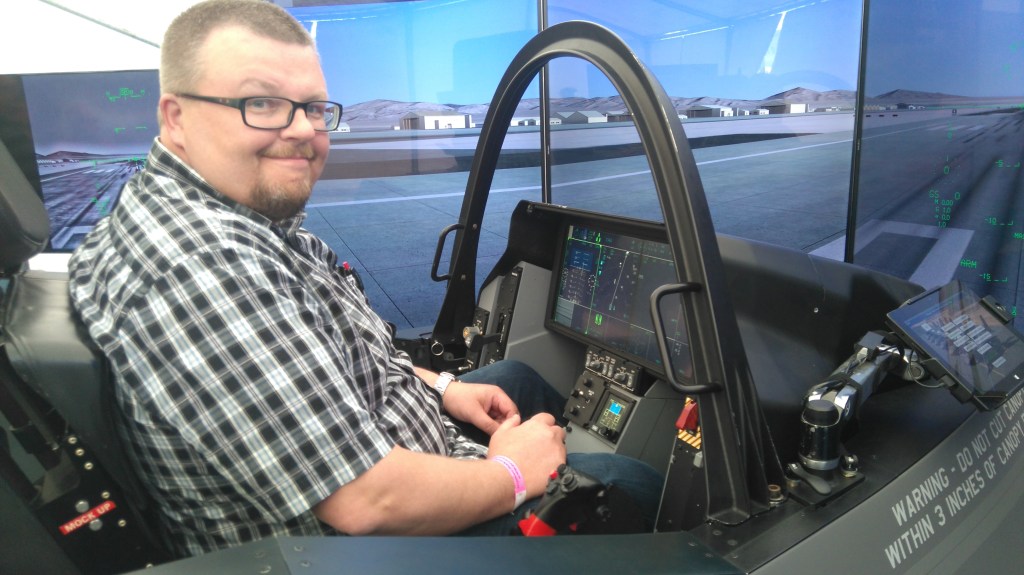
Minister of defense Antti Kaikkonen‘s statement along the lines that “industry co-operation, war time security of supply, and foreign policy aspects were gateway to capabilities evaluation”, and “we went military capabilities forward” never rang well to my ears and after reviewing DCA and OCA scenarios I had run I never quite could believe that in those cases (comprising 50% of evaluation points, I wish to point out) F-35 could clearly be the winner.
After this had been nagging me, I decided to contact Mr Lauri Puranen, the point man of the HX-fighter replacement program. Mr Puranen was kind enough to get back to me and gave me a few pointers about the matter I will discuss here. I will first put the points he made in here for quick reference:
1.) Dassault and Eurofighter did not disclose how many fighters their bid included for the public, unlike SAAB Boeing and Lockheed-Martin. Nor did Mr Puranen tell me now.
2.) All other HX hopefulls did include at least some of the sensors or countermeasures in pods, F-35 has them all built in.
3.) and considering simulations: commercial contra government simulations and using simulation for long runs contra single scenario runs
4.) There was not a “users choise” in HX campaing, but rather there was much different opinios on what would be “the bestest Finnish Air Force next gen fighter” in squadrons
About previous post Mr Puranen mentioned that “well yes you could make that kind of conclusion”. This was about was the best plane REALLY picked? If you needed to pass the industry/security of supply gateway to enter into the evaluation. This is quite reassuring, as mentioned, as I could not see how F-35 beat Eurofighter Typhoon in OCA/DCA scenarios.
Here facts end and speculation begins:
So as the simulations ran for about a week of air warfare, so it would be inevitable that there will be casualities during the run. (As it happened in my simulations too, but inRL these would accumulate). The simulation may be better than the Command modern warfare (likely) or not, but the fact remains that with modern air warfare tempo of 3-5 missions a day for 7 days per fighter would eat into available fighter force quite fast. Lets say with “sustainable” casualty rate of 1,5%-2% /mission at 50 fighters, you would be loosing 3-4 fighters a day, so by the end of the week you would be down at 20-25 fighters. In reality attrition could well be higher. (50 fighters * 7 days * 4 sorties*0,02.) This is the reality of modern war. you will need to fight the war through with the assets you have in beginning. There will not be, in all likely hood, time to drive up production and start outproducing the other side like in WW II.
This in turn would imply with the fact n:o 1 and that the were not found to be supply secure enough to get out from the gate, that Dassault and Eurofighter offerings were less than 64 fighters. While 64 is not a magic number. (Right number for area size and shape of Finland right number is around 100 fighters) So my guess is that Eurofighter and Dassault offered quite significantly lower numbers of fighters. Say in the neighbourhood of 48 planes, four western squadrons.
As FAF is doomed to fight at it alone, the attrition rates and secure of supply are really a big things to consider. Even nations with their own aeroplane production capability will mostly need to see the war through with the fighters they have at the beginning rather than ramp up the production and start outproducing the enemy. But when you are at the far end of the supply chain boy do you need to take that into conclusion.
The presence of sensors and ECM equipment in pods is both boon and hindrance: On one hand, when you hang something outside of your fighter it creates right angles and extra surface to bounce off radar radiation. On the second hand it is much easier to upgrade pods than it is upgrade complete fighters. Also they create parasitic drag. So even when fighter, which maybe on paper can do about mach 2 when clean or in light A2A mission, will not be able to do so when loaded up with fuel, missiles and different sets of pods. Same time F-35 does 1,6 mach clean and still able to do the same in A2A mission as all weapons are stored internally.
considering simulations I’m still not 100% convinced that Finnish non-commercial simulations would wipe the floor with CMANO. CMANO also has restricted use simulation environments for govts and official use, so I am willing to go as far as “data might not be as accurate, and the simulation may be more streamlined for the sake of faster running.” In calculating RCS this is of course a big point of importance, The RCS of fighter is not a neat square but rather a spagetti thrown to the wall type of picture. So I concur that their simulation may be 75-90% accurate compred to CMANO’s 50-65%
Now it is time to move on to other things…

Minun englanti ei riitä tuohon ymmärtämiseen täysin.
ke 16. helmik. 2022 klo 14.27 Epämuodikkaita ajatuksia kirjoitti:
> epamuodikkaitaajatuksia posted: ” Minister of defense Antti Kaikkonen’s > statement along the lines that “industry co-operation, war time security of > supply, and foreign policy aspects were gateway to capabilities > evaluation”, and “we went military capabilities forward” never rang well to > ” >